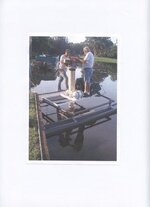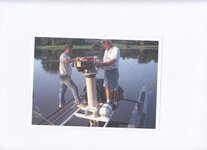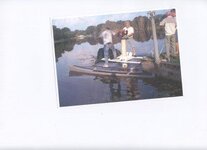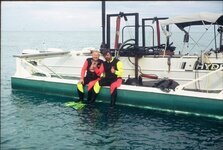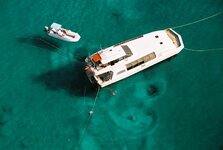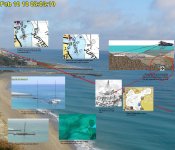- Jun 3, 2007
- 1,207
- 2,046
- Detector(s) used
- A sharp eye, an AquaPulse and a finely tuned shrimp fork.
- Primary Interest:
- Shipwrecks
Since this forum seems to be in the doldrums here is a thought I've had while landlocked...
Has anyone tried a pontoon boat/barge with a midships located diesel engine running into a blower setup? Big old pontoons in need of deck repair can often be had for a very reasonable price. A Cummins truck engine ($750 at the U-Pull salvage yard), a right angle drive, a prop, some well thought out bracing and downward ducting...
Reasons in favor:
The 90 degree turn in stern mounted mailboxes comes with a significant cost in efficiency.
Much easier to maintain a deck mounted engine than one mounted below-decks.
Less wear and tear on the propulsion units on your boat.
If the blower motor quits, you can still get home with the towboat/tender.
Fuel costs. Fuel costs. Fuel costs.
Been done? Won't work? My brain is suffering from too much time out of seawater?
Has anyone tried a pontoon boat/barge with a midships located diesel engine running into a blower setup? Big old pontoons in need of deck repair can often be had for a very reasonable price. A Cummins truck engine ($750 at the U-Pull salvage yard), a right angle drive, a prop, some well thought out bracing and downward ducting...
Reasons in favor:
The 90 degree turn in stern mounted mailboxes comes with a significant cost in efficiency.
Much easier to maintain a deck mounted engine than one mounted below-decks.
Less wear and tear on the propulsion units on your boat.
If the blower motor quits, you can still get home with the towboat/tender.
Fuel costs. Fuel costs. Fuel costs.
Been done? Won't work? My brain is suffering from too much time out of seawater?




